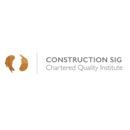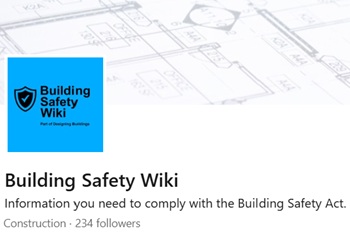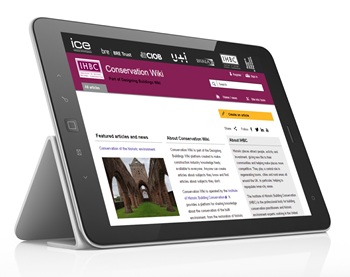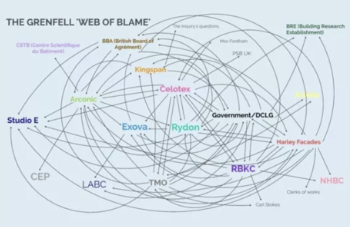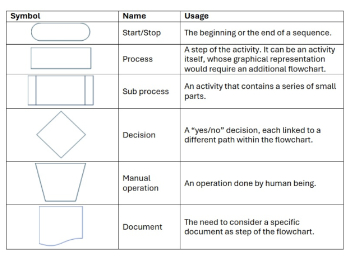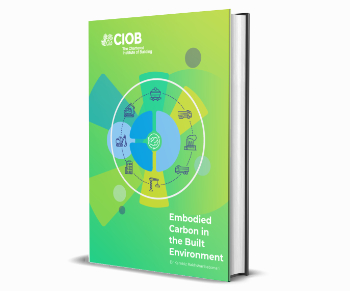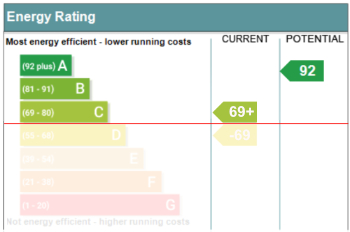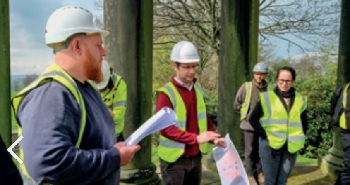Off-Site Manufacturing
Executive Summary
The Quality Professional entering the world of off-site manufacturing will be faced with a different and sometimes bewildering environment. Manufacturers may well be producing for construction, but they have different ways of working that better suit delivery of their products. This article describes some of these ways but cautions the person attending these organisations to think carefully and to understand how the organisation has made arrangements to provide assured product before raising concerns.
General
Manufacturing organisations generally run processes that deliver product. Much of this product will have general use with many of their customers, not just the project for whom the professional works. Most manufacturers deliver bulk product. Consider electrical fittings for second fix, anchor bolts or rebar. Quantities can vary and lengths may be changed, but, in general, they work to a production schedule projected from sales forecasts. This does not apply, of course to those items that are being developed specifically for the project, such as complex electronic systems for railway signalling or control systems for power stations.
Batch production generally uses travellers or manufacturing route cards. These documents list all the production steps and the inspections and tests that are planned after each stage. It takes the place of the inspection and test plan (ITP), providing the detail required for the people manufacturing the items. Many organisations will not understand the term “ITP”, but will be happy to prepare one in addition if they are paid!
This article assumes that customers of manufacturers have undertaken suitable actions to confirm that the vendor is capable of delivering to contract/order and any supporting documentation and that due diligence has been undertaken. During the manufacturing process, it is normal for the customer to undertake audits and technical liaison during the design and manufacturing phases. This may include presence at design reviews, examination of samples, first-offs and management system/record audits. This is less likely when procuring off-the-shelf items.
Acceptance of product generally falls into two stages, acceptance before the items leave the factory and acceptance at site. Factory acceptance can include either inspection (Factory Acceptance Inspection) or test against agreed specifications (Factory Acceptance Test) or both. A pre-requirement for both factory and site acceptance is confirmation that the management system is sound and that all the relevant records, including those for design and procurement, are complete and indicate that acceptance will be successful. Many complex systems now include software. a chapter on software acceptance is covered.
Quality Document Review
At each stage of a project, it is vital to undertake review of the documentation supporting the design, development and construction of the delivered product. Some of these checks will be undertaken in conjunction with the supplier, whilst others will form part of the normal processes within the procuring organisation.
Some organisations refer to these checks as a “gate” process. The author has found that gate meetings held to confirm and accept documentation to have prevented errors being made in later stages of the project.
Internally within the project, gate reviews are often held at defined points in the design and development process, prior to procurement and prior to construction. They should be attended by members of the senior management team who will permit or refuse continuation into the next phase. Typically, certain strategic documents will be subjected to inspection by Quality staff before the meeting. On example is the design check certificate that might be inspected to confirm authorisation, correct listing of design documents and so forth. For off-site manufacture, any information that impacts on the supplier should be carefully reviewed before procurement is authorised.
Externally within the supplier’s organisation, there is clearly a need to confirm that all stages in their design and manufacture have been completed correctly and that there is documentary evidence to support this. Depending on contractual agreements, these checks should be carried out prior to design review, prior to factory acceptance and prior to construction acceptance as a collaborative activity with both parties taking an active part.
What is important is that these inspections should be undertaken before the review. This will mean that the members of staff who undertook the inspections can report on the condition of the documentation into the meeting. Incidentally, similar checks can be made on costings and finance availability, staffing requirements, health and safety and other aspects of the project that demand confirmation.
Additionally, Quality staff are able to confirm that due process was properly followed during the review.
Factory Acceptance
Factory acceptance is the one opportunity to provide assurance that the product to be delivered meets the Client’s requirements before it leaves the supplier’s premises. This has the advantage that if there is an issue, it can be sorted out there and then, which is preferable to having to ship the item back from site.
There are three activities that can take place during factory acceptance:
Examination of the Quality Management System
It is to be hoped that steps have been taken prior to contract agreement to confirm that the supplier has a robust management system that assures the delivery of satisfactory product. If the management system has been registered to a known specification, such as ISO 9001, the Quality professional should confirm that the Certification Body has been accredited by UKAS or an equivalent body. There are other articles on the CQI ConSIG web site (www.consig.org) that discuss this matter.
The Quality professional should keep a regular watch on the development of the product to assure that defined processes have been followed. Any deviations should be noted and followed up before the audit of the assurance evidence
Audit of Assurance Evidence
Manufacturing will have produced a significant amount of documentation. Frequently, the Quality professional has responsibility for examining this evidence to confirm that it is correct, complete and properly authorised. Typically, this audit will take place a day or so before the acceptance itself and offers an opportunity to confirm that other aspects of the management system and the operation of the business meet standards.
The evidence that should be examined could include all forms of certification from goods received to final inspection & test, route cards/travellers/ITPs, test records and internal audit records pertaining to the product to be delivered.
Factory Acceptance Inspection (FAI)
This is a detailed and close examination of the product to be delivered to confirm before it leaves the factory that it fully meets the contractual requirements. Large items are normally fully inspected, although in some cases only certain critical elements may be inspected. Some projects require many items to be provided over the lifetime of the project. In this case, once confidence has been gained, sample or periodic inspection may be considered appropriate.
The Quality professional must fully understand the requirements to be met, together with the appropriate workmanship standards to be imposed. For electronic systems, knowledge of what constitutes a good solder joint or crimp joint is an example. Similarly, for steel structures, the Quality professional should be familiar with welding standards. These are just examples of what the Quality professional may meet. This is not to say that one must be an expert in the subject, but to know when the wool is being pulled over the eyes!
For complex items, the Quality professional will be accompanied by representatives of the construction and/or design team who will be able to take the lead and be advised by the Quality professional.
Factory Acceptance Test (FAT)
The level of testing undertaken just prior to delivery will depend on the requirements of the contract. In most cases, the Client will expect that there is a full diagnostic test to be absolutely sure that there will be no issues after delivery. This is particularly true for complex electronic systems. As these tests can take some time, FAT testing may take place as the final production test, although it is to be hoped that the supplier has made sure that the system works before FAT to avoid embarrassment and undue cost/time.
Site Acceptance Inspection (SAI) and Site Acceptance Test (SAT)
Site acceptance is used to confirm that the product that was inspected and tested before leaving the manufacturing facility still meets the same parameters as were found at FAI and FAT following delivery to site. Of course, test and inspection after installation may be the responsibility of the site under normal procedure or may form part of SAI/SAT. Again, it is necessary to confirm that confirm that all the documentation, including inspection and test results and configuration status as appropriate, have not changed and that the item itself has not been changed in any way. SAI and SAT take place before setting to work and commissioning to provide a baseline.
Civil Off-Site Manufacturing
Most civil manufacturing is restricted to items constructed from concrete and other materials or structural steel. These tend to be manufactured as special to type for a specific project. Many organisations will use inspection and test plans, although manufacturing route cards may also be found. This will depend on the product. For example, an organisation producing small concrete items, such as sleepers for the rail industry may well batch produce and use a route card. On the other hand, a company that is providing the elements of a steel structure that is to provide a framework for a building is more likely to use an individually developed inspection and test plan.
Mechanical Off-Site Manufacturing
Most organisations providing items that are solely mechanical, such as pumps, will fabricate parts on a production line and then assemble them into the finished item. Manufacturing route cards or travellers are used for both phases. These should contain a list of all the stages of fabrication including all inspection and test activities. Generally, each line item is signed off by the person completing it. Normally, the parts are manufactured and placed in store to be withdrawn as needed. The delivered item should be accompanied by a certificate of conformance and sufficient information to confirm that conformity. There should also be traceability of the parts to the manufacturing process.
Other than single items that are manufactured for delivery, mechanical components may be joined together to create a single entity or an assembly, for installation on site. Typical examples may include pipework, mechanical assemblies used in air conditioning systems and railway trains.
Electrical and Electronic Off-Site Manufacturing
This section can be divided into two parts, although it can be difficult sometimes to be rigid in this division.
Small Parts Not Requiring Software
Here we are talking typically about items that are produced in bulk and are used for first or second electrical fix, such as switches, containment and cables. These items will be manufactured in batches generally using manufacturing route cards. Each batch of items should have certification that they meet not only the contractual requirements, but also the nationally accepted standards for electrical or electronic items.
The Quality professional should confirm that the manufacturing process is sound and that the certification is traceable to the batch produced. It should be recognised that traceability will only be to the batch and probably not to the individual item that has been supplied.
Bespoke Electrical and Electronic Systems Not Requiring Software
Many projects require bespoke passive electrical systems. Typical examples could include electrical distribution boards and location cases for railway signalling systems. These items have a mechanical assembly that may or may not include an enclosure that must be checked for stability and correctness. All electrical assemblies must be tested for correct connection and insulation to the appropriate standards/regulations. Additionally, there must be suitable testing to confirm that the item is safe to use before dispatch.
Complex Electronic Systems
Complex electronic systems have a hardware and a software component. They are generally developed to a specific requirement specification that forms part of the contract. They are generally “one-off”, although several may be produced for a project. The Quality professional should have responsibilities at the various stages of production:
Design.
The Quality professional should examine the records produced during the design phase to confirm that all certification has been completed and that the design drawings, circuits and other design information has been included at the appropriate revision status and that the appropriate authority for sign off has been applied. The results of this examination should be part of the input to the design review. Whilst confirmation that the design meets the technical requirements of the contract may be under the responsibility of the Chief Engineer and Project Manager, the Quality professional may be able to provide advice on the conduct of the review.
Production.
In most cases, there are two distinct phases, sub-unit production and unit assembly.
· Generally, sub-assemblies are in the form of printed circuit boards with components that have been solder on. The process is to apply solder paste to the points on the board where components are to be soldered, place surface mount components using a “pick and place” machine and then solder using reflow techniques. The larger through-hole components are normally soldered by passing them over a wave. Subassemblies can also include wiring looms and harnesses.
· The finished unit is formed by linking together subassemblies and, usually, mounting them within a chassis or an enclosure.
Inspection and test.
Inspection of electronic equipment can be a specialised process and will require some pre-knowledge by the Quality professional. There are countless issues that can arise at subassembly and unit level as well as after installation. FAI and FAT should debug the hardware, although it should be recognised that few boards these days are without some form of software or firmware on-board.
Software Production
General
This section does not provide a complete review of all aspects of software development but does allow an insight into this very complex subject, especially for the Quality professional whose experience to date has been restricted to site matters.
It should be realised that “software” is the action of code on electronic hardware. The two must both exist, any changes to one will affect the other. Code is generally compiled into modules, each of which provides functionality to the software. There are many links between modules, so that one module may call on another. As a result, changes to one module may affect many others in the compiled software.
Software may exist as code that is loaded into electronic hardware. It may be embedded into electronic components as “firmware”. It may be being used to emulate hardware in order to cut down the number of components or to simply reduce the size of the finished item. A complex electronic system is liable to have all three.
There are many different methods of producing software. It is important for the Quality professional to ascertain what methods are being used and to become familiar the controls that are used to develop and assure the relevant form of software before venturing into this field.
One of the most common concerns for the Quality professional is the revision status control of software as it is presented to the common domain. Frequently, revision status is the responsibility of the developer whilst it is only in his or her domain. Once it is in the public domain for test and further change, a configuration status account should be adopted and controlled so that the revision status of all parts of the software are known. Without this, it is not possible to retain control of the software and all traceability to the original specification will be lost.
Requirements Definition
In all forms of software development, it is important to ascertain the requirements that the finished development must meet. This can be very clearly defined, as in classic software development or may be a series of ideas in rapid development. In some cases, there will be strict requirements laid down in contract, based on the need for the completed system to meet regulatory requirements. This is particularly true for the rail and nuclear environments.
The Quality professional should make certain that the requirements have been defined adequately and that they have been discussed and approved by the User/Client. Usually, this takes place during a design review in the design phase of a construction project.
Classic Software Development
Classic software development is a carefully programmed and controlled method of developing software. It follows the normal manufacturing or construction project lifecycle model, beginning with requirements definition, followed by a design brief and full design development before coding takes place. The code is tested module by module before being combined in a “configuration”. As stated above, control over the configuration status must be retained, especially when making changes to individual modules, noting that a change to one module may have an effect on one or more other modules.
Object Orientation Development and Rapid Development
Here the emphasis is on speed of development. The requirements specification may be very broad and only provide a general overview of the Client’s needs. Based on this, the developer will provide a first-off version of the software, usually for the Client’s view. This will allow all concerned to decide how close it is to the needs and to make alterations. It could be, for example, that the specification calls for a green text. During testing, the Client may finalise the exact shade of green so that the software can be updated.
Parametrisation and Other Select-on-Test Arrangements
In some instances, a core of software may be implemented in a system that is common to many situations. This can be adapted to a specific situation by loading a set of parameters into the system at unit or pcb level or by selecting jumpers on a board to open or close different facilities so that the board works in the way that meets the requirements of that location. The most important point again for the Quality professional is to know that there is a recognisable configuration status account and that each board/unit conforms to that account.
Modular Build (Modern Construction Methods)
There is a move to fabricate significant parts of a new build in the factory and then to ship it to site. A typical example is a hotel bathroom that can be fabricated and has both first and second fix carried out in the factory. All that remains is to roll the unit into a pre-constructed point in the build and hook it all up. There are some interesting examples to be found at the following URL https://www.the-possible.com/six-examples-of-modular-construction/.
Similarly, panels and other major items may be fabricated, such that an entire build may be produced in part form and then delivered to site for assembly. This method can be used to provide housing rapidly and cheaply and can form the basis of large-scale manufacture of major elements of new build.
The build may use traditional methods, although new methods are being developed all the time. The Quality professional is advised to consider the methods being used – and, of course, the specifications and other design information, prior to an audit. A visit to site to become familiar with the location and the build is often a wise move.
This sounds very simple! However, the Quality professional should confirm that all necessary inspection and testing of the unit and/or deliverable parts has been carried out before it leaves the factory. It is a bit late to find out that something doesn’t fit when it is in place. So, what checks need to be undertaken?
All electrical tests should be complete to conform with the relevant standards (Wiring Regulations in the UK). These should cover lighting and power circuits.
All pipework should be pressure tested to confirm that there are no leaks.
The dimensions are correct. This relates to the size of the unit as well as the location of the various connections and mountings at the site. Note that it is important to confirm that the connection and mounting points on site match up as well. Incidentally, if the unit is one of a series of units going to the same or multiple sites, there should be an interchangeability drawing to which the unit must conform and to which they must be tested, possibly using interchangeability gauges.
The management systems in factory and on site are robust and take into concern in particular the transfer of the items/units from the factory to the site, including the necessary inspection, testing and certification.
Certification, Production Release and Handover
Certification
Certification is a declaration by the organisation producing an item that it meets the contracted requirements. This happens at all points in the production process. Typical examples include:
- Design check certificates
- Material certificates
- Inspection and test certificates
- FAI and FAT certificates
- Production release certificates
- Handover certificates
Each certificate should have been signed off by a suitably competent person with authority to provide adequate assurance that the requirements for that element have been met. The certificate should list, or be accompanied by, the relevant assurance evidence. For example, a design certificate should list the drawings and specifications that it is covering: a test certificate should refer to the relevant standards, specifications and test results, together with the test equipment type / serial number and calibration evidence. The Quality professional should confirm that the certificate has been properly authorised and that the associated evidence is at the revision status declared on the certificate.
Self-Certification
Self-certification relies on a good level of collaborative working and the trust that lies between the procuring organisation and its contractors. This can introduce dilemmas for the Quality professional as there are limits on the checks that can be carried out. However, when it works well, considerable time and cost savings can result. The golden rule is “trust and confirm”, that is, a limited number of checks are carried out to confirm that the certificates are correct, with the number increased or decreased, dependant on the results.
Production Release
This is a special form of certification that releases a product from fabrication into test. It takes place after a thorough inspection that has the sole objective of confirming that the product is safe to test. A typical example of this is dead testing, that is Checking cables, wires, etc., visually and electrically for resistance and insulation. Production release may also be used for installed systems, such as railway power or signalling systems, before commissioning.
Packing and Dispatch
It is vital that the product arrives in the same condition that it had in the factory. The Quality professional should pay attention to the packing specification to confirm that it is adequate to protect the product from environmental damage (rain, heat, cold, etc.) and mechanical/handling damage during transit.
Handover
Handover occurs at the point where the project is complete and given to the Client. At this point, there may only be one important certificate – the “Permit to Operate”. Alternatively, there may be a Handover Certificate or equivalent.
The final form of certification will be supported by a myriad of assurance evidence at all levels and from all phases of the project. Major construction projects may have several millions of pieces of assurance evidence. For this reason, the evidence must be organised in such a manner as to provide traceability from top to bottom. If there is a failure in one fabricated item, its location must be known and the original evidence of conformance traced.
Frequently, certification is tiered, so that each element of the completed project is individually certificated. Once installed and integrated, the sub-system is certificated as conforming. This allows a progressive approach to inspection and test, which is important especially in those situations where it is not possible to re-inspect easily later.
And Finally...
Much of this will need the cooperation of the manufacturer. The ideal situation is to have formal collaborative working in place, although the minimum must be contractual Quality requirements in place that include access to the manufacturer’s management system and the manufacturing premises where the items are being fabricated. This must include access for the purpose of auditing that processes used to fabricate the items that are deliverable under the contract. The Quality professional should be an advisor, participating during reviews and acceptance of product design and manufacture.
Original article written by Keith Hamlyn & reviewed by Peter East on behalf of the Construction Special Interest (ConSIG) Competency Working Group (CWG). Article peer reviewed by the CWG and accepted for publication by the ConSIG Steering Committee 26/1/2022.
--ConSIG CWG 17:53, 29 Jul 2022 (BST)
Related articles on Designing Buildings
Featured articles and news
ECA digital series unveils road to net-zero.
Retrofit and Decarbonisation framework N9 launched
Aligned with LHCPG social value strategy and the Gold Standard.
Competence framework for sustainability
In the built environment launched by CIC and the Edge.
Institute of Roofing members welcomed into CIOB
IoR members transition to CIOB membership based on individual expertise and qualifications.
Join the Building Safety Linkedin group to stay up-to-date and join the debate.
Government responds to the final Grenfell Inquiry report
A with a brief summary with reactions to their response.
A brief description and background to this new February law.
Everything you need to know about building conservation and the historic environment.
NFCC publishes Industry White Paper on Remediation
Calling for a coordinated approach and cross-departmental Construction Skills Strategy to manage workforce development.
'who blames whom and for what, and there are three reasons for doing that: legal , cultural and moral"
How the Home Energy Model will be different from SAP
Comparing different building energy models.
Mapping approaches for standardisation.
UK Construction contract spending up at the start of 2025
New construction orders increase by 69 percent on December.
Preparing for the future: how specifiers can lead the way
As the construction industry prepares for the updated home and building efficiency standards.
Embodied Carbon in the Built Environment
A practical guide for built environment professionals.
Updating the minimum energy efficiency standards
Background and key points to the current consultation.
Heritage building skills and live-site training.







